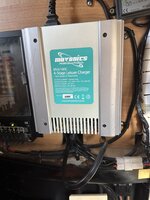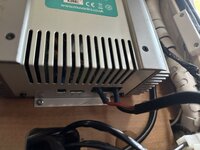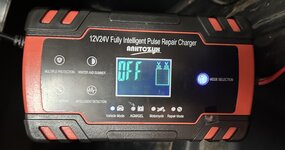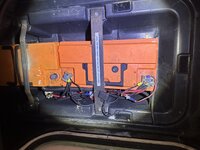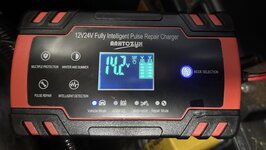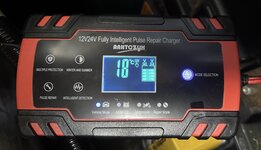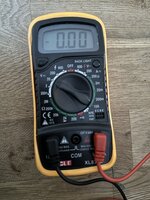Realised over the least few weeks although our 2007 Swift Kon-Tiki tag is on hook up at home that the hab batteries were not working properly.
Just had a local guy advertising caravan/MH repais/servicing etc visit and test them. He says tht the charger and both batteries need replacing.
We have considered selling the MH, but might decide to have one last trip to Europe in the spring first (or may keep it). He has suggested that if we may keep it he would suggest changing from lead acid to AGM, which would be more expensive than sticking to lead acid, especially as the new charger would be more expensive too.
I have added a pic of the current charger, the light in the switch is flashing and he says there is no power coming out of it. He says they are not repairable.
My first question is, is this correct?
the one hab battery was added by the dealer when we purchased the MH 10 years ago, the other one may be the original. I am not surprised that they are shot.
Would be interested in thoughts on the lead acid vs AGM options both for batteries and chargers. Cant seem to find the exact replacement charger should we stick to led acid.
He also said that they are not wired correctly, meaning one is more of a back-up rather than them both sharing the load more equally.
He suggested if we go with AGM 95Ah would be good enough.
Any suggestions, ideas welcome.
Thanks.
Just had a local guy advertising caravan/MH repais/servicing etc visit and test them. He says tht the charger and both batteries need replacing.
We have considered selling the MH, but might decide to have one last trip to Europe in the spring first (or may keep it). He has suggested that if we may keep it he would suggest changing from lead acid to AGM, which would be more expensive than sticking to lead acid, especially as the new charger would be more expensive too.
I have added a pic of the current charger, the light in the switch is flashing and he says there is no power coming out of it. He says they are not repairable.
My first question is, is this correct?
the one hab battery was added by the dealer when we purchased the MH 10 years ago, the other one may be the original. I am not surprised that they are shot.
Would be interested in thoughts on the lead acid vs AGM options both for batteries and chargers. Cant seem to find the exact replacement charger should we stick to led acid.
He also said that they are not wired correctly, meaning one is more of a back-up rather than them both sharing the load more equally.
He suggested if we go with AGM 95Ah would be good enough.
Any suggestions, ideas welcome.
Thanks.


